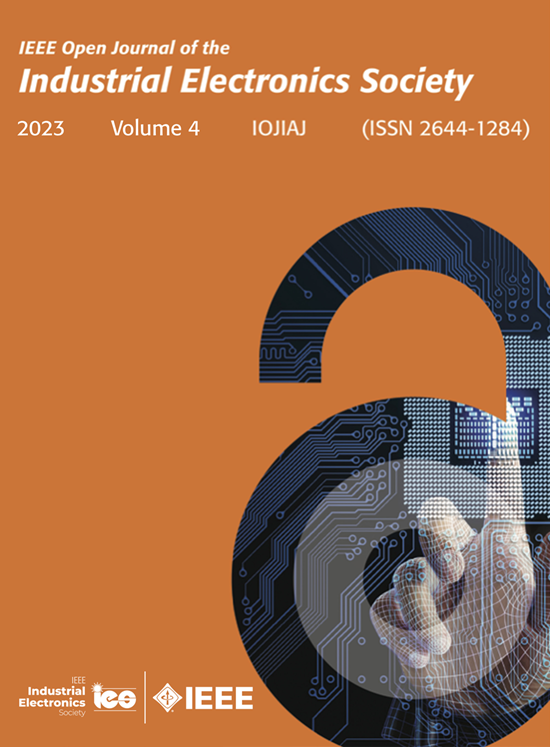复合干扰滤波:一种新的多源、异质和异构干扰系统状态估计方案
IF 4.3
Q1 ENGINEERING, ELECTRICAL & ELECTRONIC
IEEE Open Journal of the Industrial Electronics Society
Pub Date : 2023-09-19
DOI:10.1109/OJIES.2023.3317271
引用次数: 0
摘要
长期以来,状态估计一直是信号处理和控制领域的一个基本问题。主要挑战是设计具有抑制或衰减各种干扰能力的滤波器。随着大数据时代的到来,复杂系统的扰动具有物理多源性、数学异构性,通过异构(加性、乘性和隐性)通道影响系统动力学,并相互深度耦合。在传统的滤波方案中,多源非均匀扰动通常被简化为集中扰动,这样“单个”扰动就可以被抑制或衰减。自2012年的开创性工作以来(郭和曹,2012),提出了一种新的状态估计方法,称为复合扰动滤波(CDF),该方法根据多源、异构和异构扰动的具体特征来处理它们。使用CDF,可以通过精细量化、有效分离以及同时抑制和衰减干扰来增强抗干扰能力。本文概述了CDF方案,包括基本原理、一般设计程序、应用场景(如对准、定位和导航)以及未来的研究方向。总之,CDF有望为状态估计提供一种有效的工具,尤其是在存在多源异构扰动的情况下。本文章由计算机程序翻译,如有差异,请以英文原文为准。
Composite Disturbance Filtering: A Novel State Estimation Scheme for Systems With Multisource, Heterogeneous, and Isomeric Disturbances
State estimation has long been a fundamental problem in signal processing and control areas. The main challenge is to design filters with ability to reject or attenuate various disturbances. With the arrival of Big Data era, the disturbances of complicated systems are physically multisource, mathematically heterogenous, affecting the system dynamics via isomeric (additive, multiplicative, and recessive) channels, and deeply coupled with each other. In traditional filtering schemes, the multisource heterogenous disturbances are usually simplified as a lumped one so that the “single” disturbance can be either rejected or attenuated. Since the pioneering work in 2012 (Guo and Cao, 2012), a novel state estimation methodology called
composite disturbance filtering
(CDF) has been proposed, which deals with the multisource, heterogenous, and isomeric disturbances based on their specific characteristics. With CDF, enhanced antidisturbance capability can be achieved via refined quantification, effective separation, and simultaneous rejection and attenuation of the disturbances. In this article, an overview of the CDF scheme is provided, which includes the basic principle, general design procedure, application scenarios (e.g., alignment, localization, and navigation), and future research directions. In summary, it is expected that CDF offers an effective tool for state estimation, especially in the presence of multisource heterogeneous disturbances.
求助全文
通过发布文献求助,成功后即可免费获取论文全文。
去求助
来源期刊

IEEE Open Journal of the Industrial Electronics Society
ENGINEERING, ELECTRICAL & ELECTRONIC-
CiteScore
10.80
自引率
2.40%
发文量
33
审稿时长
12 weeks
期刊介绍:
The IEEE Open Journal of the Industrial Electronics Society is dedicated to advancing information-intensive, knowledge-based automation, and digitalization, aiming to enhance various industrial and infrastructural ecosystems including energy, mobility, health, and home/building infrastructure. Encompassing a range of techniques leveraging data and information acquisition, analysis, manipulation, and distribution, the journal strives to achieve greater flexibility, efficiency, effectiveness, reliability, and security within digitalized and networked environments.
Our scope provides a platform for discourse and dissemination of the latest developments in numerous research and innovation areas. These include electrical components and systems, smart grids, industrial cyber-physical systems, motion control, robotics and mechatronics, sensors and actuators, factory and building communication and automation, industrial digitalization, flexible and reconfigurable manufacturing, assistant systems, industrial applications of artificial intelligence and data science, as well as the implementation of machine learning, artificial neural networks, and fuzzy logic. Additionally, we explore human factors in digitalized and networked ecosystems. Join us in exploring and shaping the future of industrial electronics and digitalization.
 求助内容:
求助内容: 应助结果提醒方式:
应助结果提醒方式:


